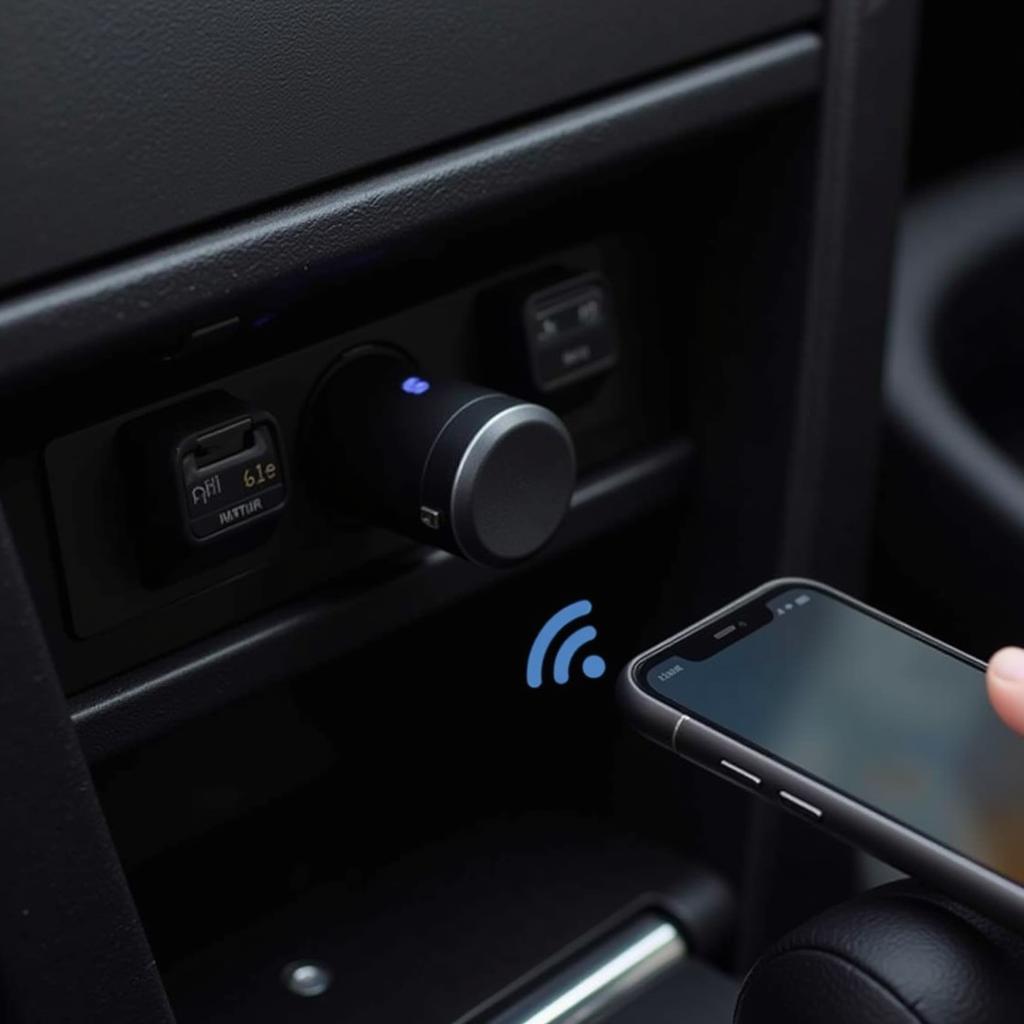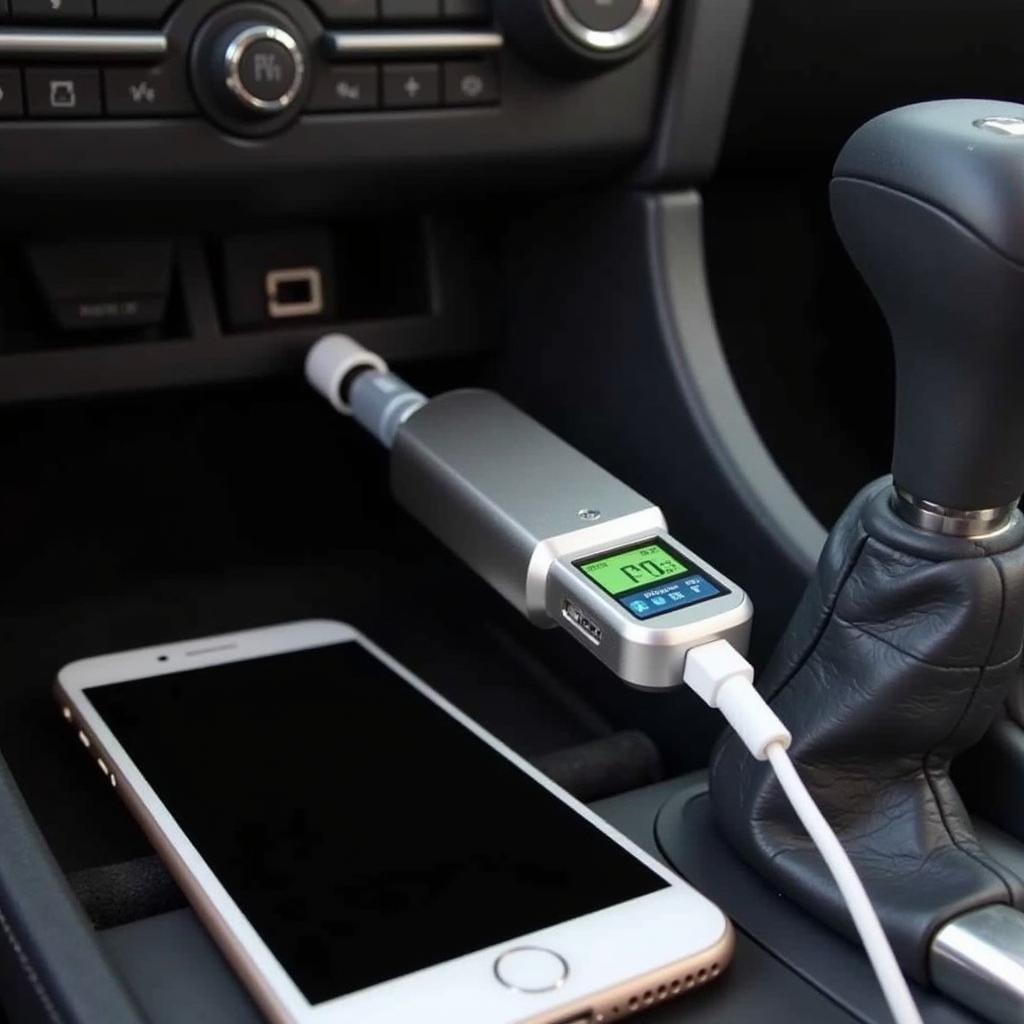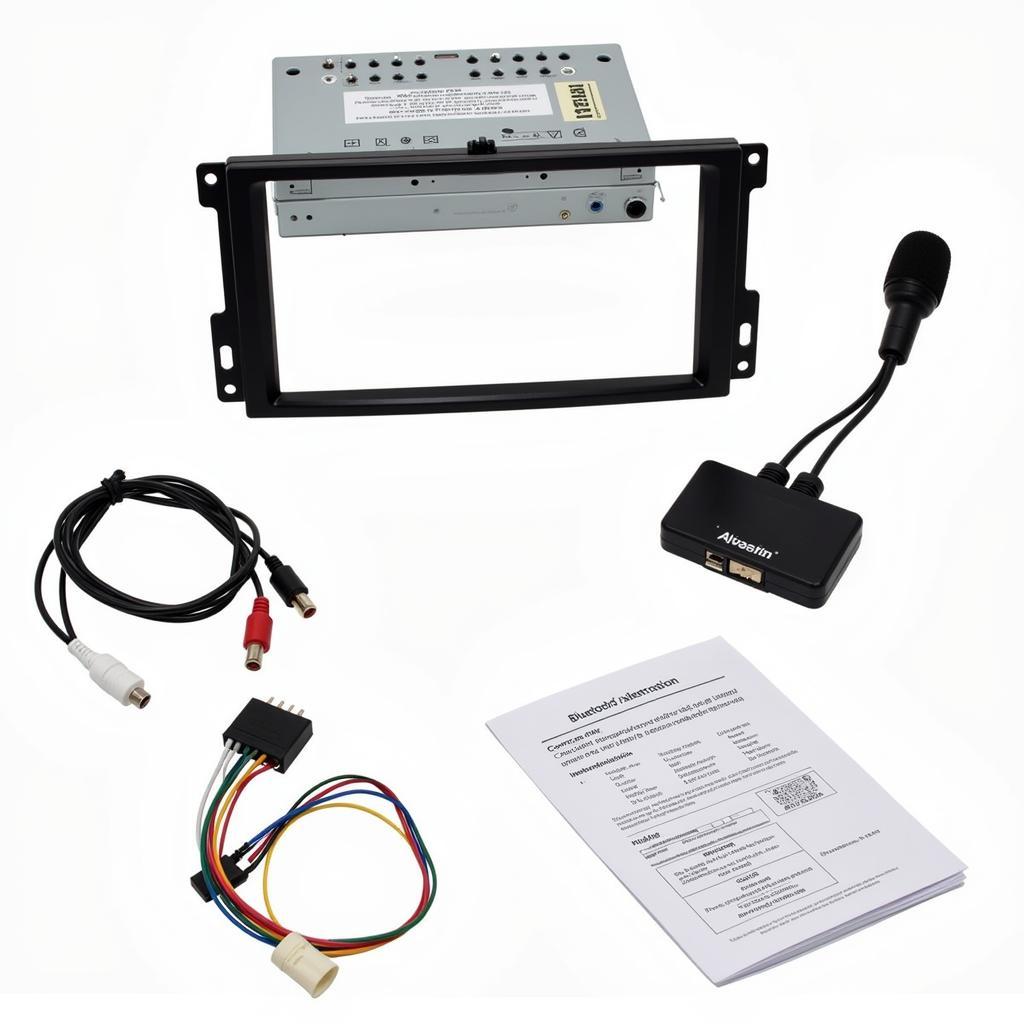Adding Bluetooth to your car stereo opens up a world of convenient, hands-free calling and wireless music streaming. Whether your car has an older stereo system or simply lacks built-in Bluetooth, there are several effective ways to integrate this technology and enjoy modern connectivity. Let’s explore the different options available for adding Bluetooth to your car radio and how to choose the best solution for your needs.
Adding Bluetooth functionality to your car doesn’t have to be complicated. With a variety of options ranging from simple adapters to more complex installations, there’s a solution for every budget and technical skill level. In this guide, we’ll delve into each method, highlighting the pros and cons, so you can make an informed decision. Whether you want a simple plug-and-play solution or are ready for a more advanced upgrade, we’ve got you covered.
Choosing the Right Bluetooth Solution for Your Car
Several factors will influence your choice of Bluetooth solution, including your budget, technical skills, and the existing features of your car stereo. Understanding the strengths and weaknesses of each approach will help you make the optimal decision.
Bluetooth Adapters: The Simple Solution
Bluetooth adapters are a cost-effective and easy-to-install option. These compact devices plug into your car’s auxiliary input (AUX) or cigarette lighter socket and connect wirelessly to your phone. They offer a straightforward solution for adding Bluetooth functionality without any complicated wiring. However, audio quality can be compromised with some cheaper adapters.
 Bluetooth Adapter Connected to Car's Aux Port
Bluetooth Adapter Connected to Car's Aux Port
Bluetooth FM Transmitters: Wireless Broadcasting
Bluetooth FM transmitters work by broadcasting audio from your phone to your car radio over an unused FM frequency. This is a relatively simple solution, though finding a clear FM frequency can sometimes be a challenge. Sound quality can also be affected by interference and signal strength. This method is best for cars without an AUX input.
 Bluetooth FM Transmitter in Car's Cigarette Lighter
Bluetooth FM Transmitter in Car's Cigarette Lighter
Similar to [lights draining car battery], using certain Bluetooth accessories may drain your car battery if left plugged in when the car is off.
Bluetooth Car Stereos: A Complete Upgrade
Replacing your existing car stereo with a Bluetooth-enabled head unit offers the best sound quality and integration. This approach provides a seamless experience but can be more expensive and may require professional installation. You’ll gain access to features like hands-free calling, music streaming, and often additional benefits like USB ports and improved audio processing.
Bluetooth Kits for Existing Stereos: Integration without Replacement
For those wanting to retain their factory stereo but add Bluetooth, installation kits are available. These kits integrate with your existing stereo system, providing a more polished solution than adapters or transmitters. Installation is more involved, often requiring some wiring expertise.
 Bluetooth Car Stereo Installation Kit
Bluetooth Car Stereo Installation Kit
Like the situation described in [car not starting battery and alternator good], sometimes the issue isn’t with the obvious components.
Installing Your Bluetooth Solution
The installation process varies depending on the chosen method. Adapters and transmitters simply plug in, while installing a new stereo or integration kit requires more effort.
Step-by-Step Adapter Installation
- Plug the adapter into your car’s AUX input or cigarette lighter.
- Pair your phone with the adapter via Bluetooth.
- Select the AUX input on your car stereo.
- Start enjoying wireless audio!
Step-by-Step FM Transmitter Installation
- Plug the transmitter into your car’s cigarette lighter.
- Tune your car radio to an unused FM frequency.
- Set the transmitter to the same frequency.
- Pair your phone with the transmitter via Bluetooth.
As explained in [keep your car battery from dying], it’s important to manage the power consumption of your car’s accessories.
Troubleshooting Common Bluetooth Issues
- Poor Sound Quality: Try a different Bluetooth solution, ensure proper pairing, or check for interference.
- Connection Drops: Move your phone closer to the Bluetooth device or restart your phone.
- No Audio: Verify the correct input is selected on your stereo.
If you’ve recently installed a new battery and are experiencing issues, check out [new car battery car still wont start] for helpful troubleshooting tips. Similarly, if your car won’t start after a jump, [car wont start after jumping battery] might offer some solutions.
Conclusion
Adding Bluetooth to your car radio significantly enhances your driving experience. By carefully considering your needs and the available options, you can choose the best solution to enjoy hands-free calling and wireless music streaming on the road. From simple adapters to full stereo replacements, integrating Bluetooth technology into your car is easier than ever before.
FAQ
-
What is the cheapest way to add Bluetooth to my car? A Bluetooth adapter or FM transmitter is typically the most affordable option.
-
Do I need professional installation for a Bluetooth car stereo? While some may opt for professional installation, many Bluetooth car stereos can be installed with basic DIY skills.
-
Can I add Bluetooth to a car with a cassette player? Yes, using an adapter or FM transmitter, or by replacing the stereo entirely.
-
How do I troubleshoot Bluetooth connection issues? Check for interference, ensure devices are properly paired, and try restarting your phone.
-
What is the best Bluetooth solution for the highest sound quality? Replacing your existing stereo with a Bluetooth-enabled head unit typically offers the best audio quality.
-
Can I use Bluetooth for navigation in my car? Yes, once your phone is connected via Bluetooth, you can typically use navigation apps and have the audio guidance played through your car’s speakers.
-
Will a Bluetooth adapter drain my car battery? While some adapters may draw a small amount of power even when off, it’s generally negligible. However, it’s always a good practice to unplug adapters when not in use for extended periods.
